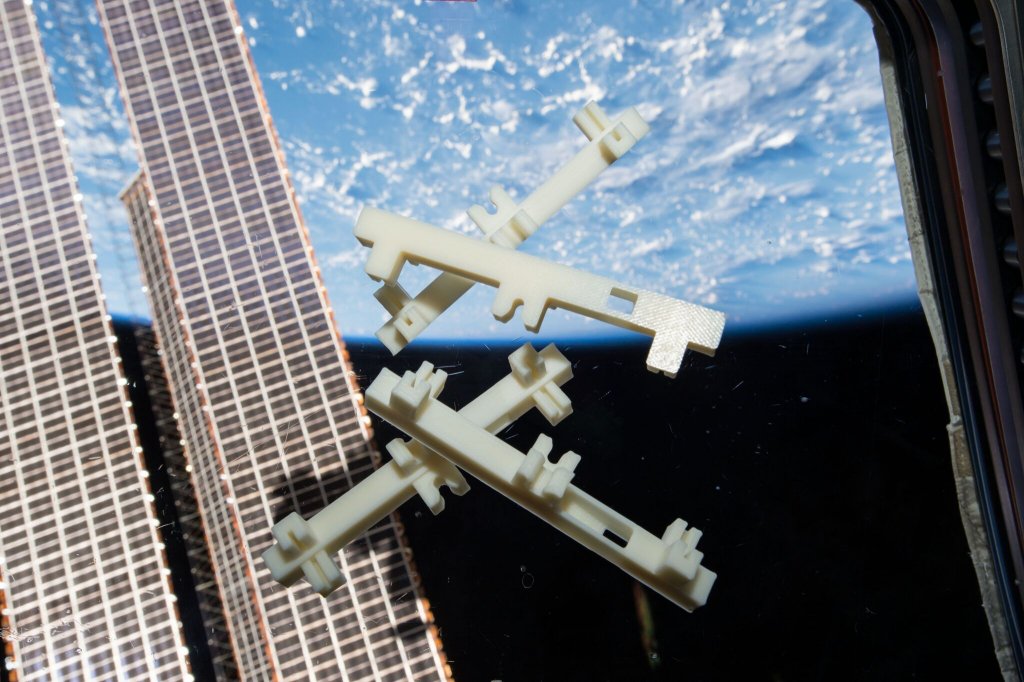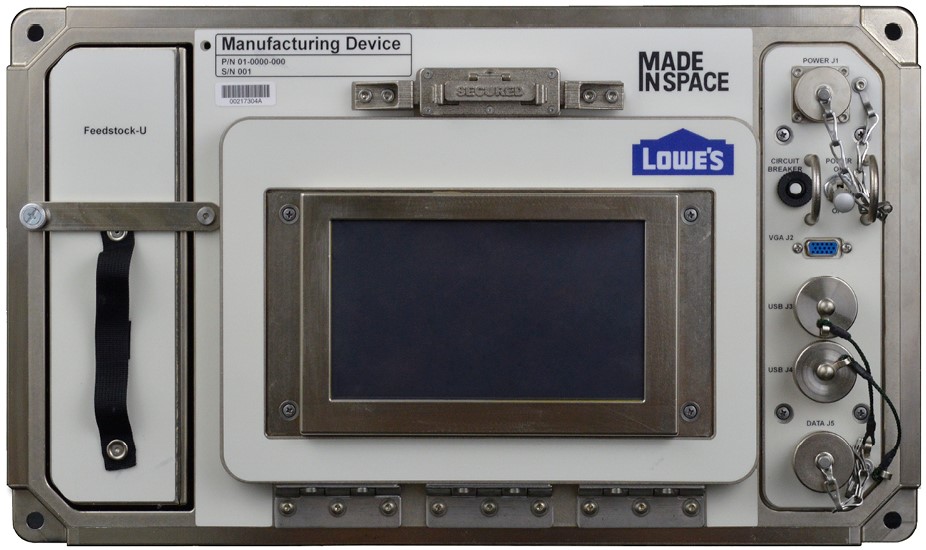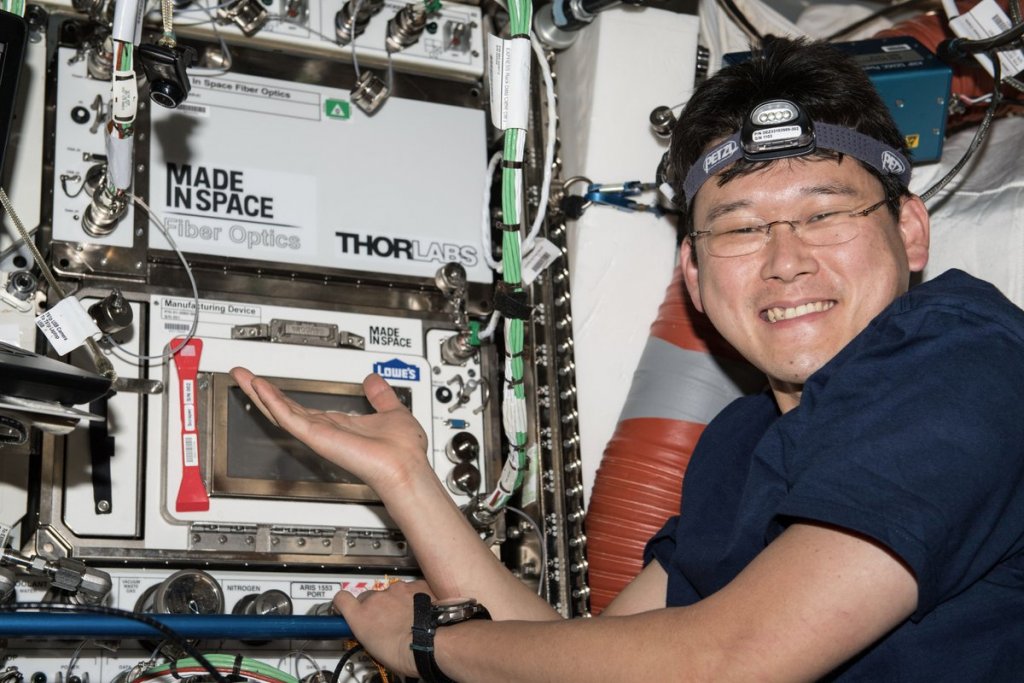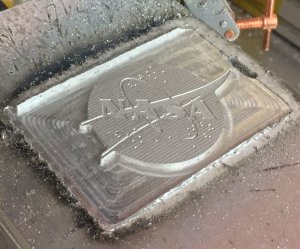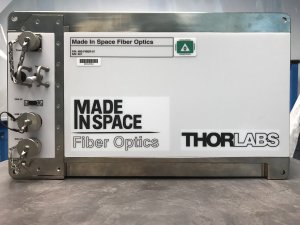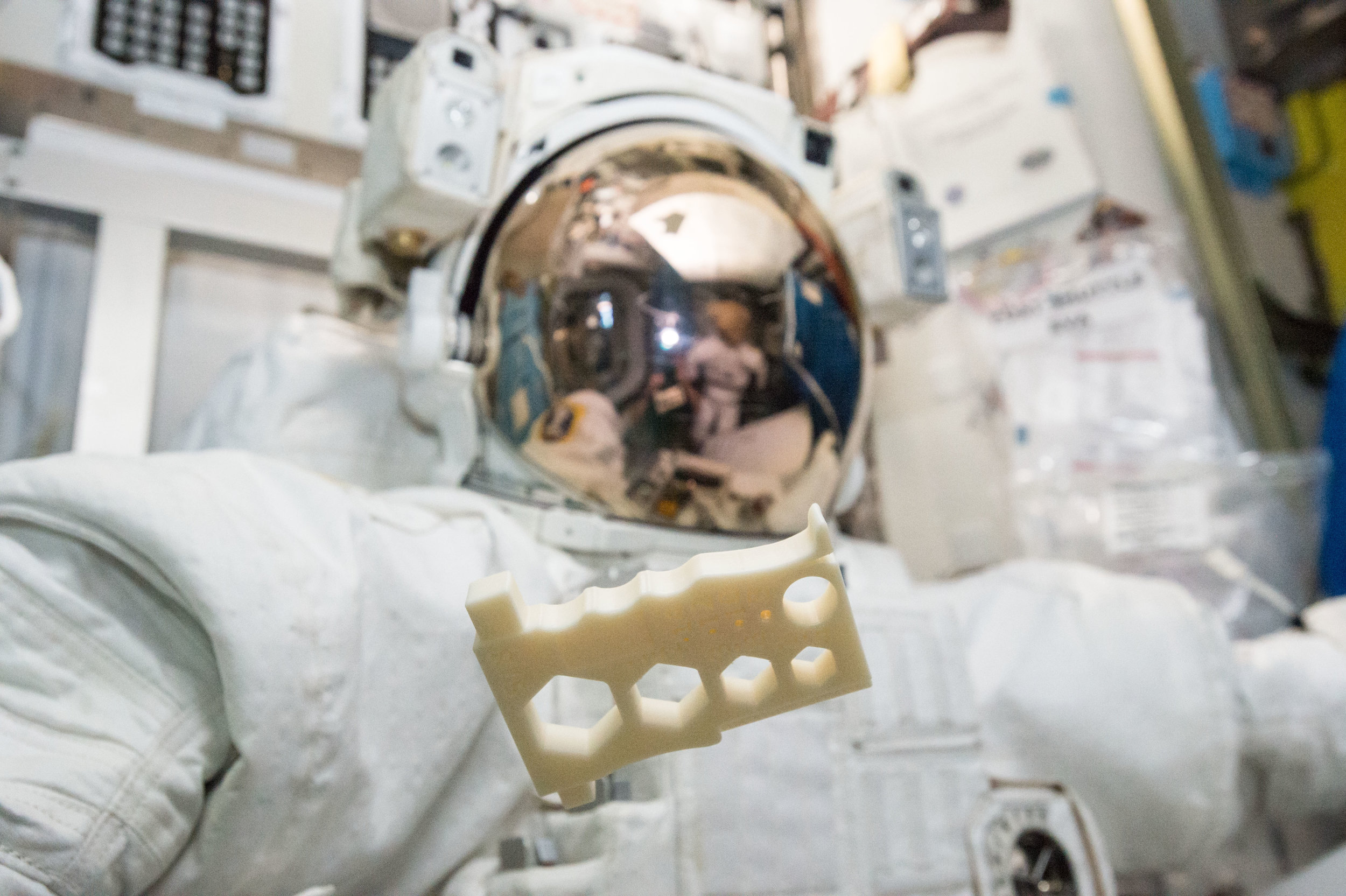 Back in 1998, five space agencies began a collaboration to build the International Space Station (ISS), but building it on the ground and then launching it into space in one go would have been impossible: at 450 tons and slightly larger than a soccer field, no rocket is big enough to do that job. So it was transported to space piece by piece and gradually built onsite, 400 kilometers above the Earth’s surface.
Back in 1998, five space agencies began a collaboration to build the International Space Station (ISS), but building it on the ground and then launching it into space in one go would have been impossible: at 450 tons and slightly larger than a soccer field, no rocket is big enough to do that job. So it was transported to space piece by piece and gradually built onsite, 400 kilometers above the Earth’s surface.
Fast forward 21 years and additive manufacturing in space has a significant role to play for human colonization in orbit. If explorers will go on missions to space in the future, they will need shelters, vehicles, tools, raw materials, and machines to do so. The one machine that can make almost any shape, even the ones you didn’t know you’d need, is a 3D printer. 3D printing onsite in space is, therefore, important. It’s also certainly easier to create and construct things in space rather than build them on Earth and then launch them into orbit. In 2014, Silicon Valley startup Made In Space (MIS) became the first company to 3D print an object in zero gravity, and just two years later they launched their Additive Manufacturing Facility (AMF) which now resides at the ISS, where parts are made and used by astronauts.
AMF, the world’s first commercial 3D printer on the International Space Station, is the most versatile manufacturing facility operating in Low Earth Orbit (LEO). AMF was also the first facility to additively manufacture anything in microgravity. After nearly three years of successful operations, the printer has produced more than 200 tools, devices, and components for a variety of customers, from medical parts, specialized NASA parts, and commercial items to Science Technology Engineering Mathematics (STEM) projects for students. Most of them get brought back to Earth and are tested to investigate the long-term effects of a microgravity environment.
Around that same time, the company began developing Archinaut—an in-space manufacturing and robotic assembly platform—as part of a public-private partnership with NASA. The system was designed to 3D print large parts and uses advanced robotics to integrate them with other components for on-orbit manufacturing of satellites. Originally, Archinaut worked as a ground demonstration, and just a year later, in a unique NASA facility that mimics the conditions of space, successfully 3D printed structural beams. The company was able to prove that the printing equipment and printed hardware can withstand the pressure, temperature, and other rigors of outer space.
So last week, NASA awarded 73.7 million dollars to Made In Space as part of the second phase of the partnership, to demonstrate the ability of the Archinaut One to manufacture and assemble spacecraft components in LEO, as part of the US’s Moon to Mars exploration. Archinaut One is expected to launch on a Rocket Lab Electron rocket from New Zealand no earlier than 2022. Once it’s positioned in LEO, the spacecraft will 3D print two beams that extend 32 feet out from each side of the spacecraft. As manufacturing progresses, each beam will unfurl two solar arrays that generate as much as five times more power than traditional solar panels on spacecraft of similar size.
 Through iterative design, the MIS technology suite has grown to include 3D printing in different polymers, 3D printing in free space, metal printing (additive and subtractive), as well as polymer recycling. Michael Snyder, MIS Chief Engineer and Co-Founder, discussed with 3DPrint.com how these exploration technologies can be used for long-duration space flight missions, on the Moon, and Mars.
Through iterative design, the MIS technology suite has grown to include 3D printing in different polymers, 3D printing in free space, metal printing (additive and subtractive), as well as polymer recycling. Michael Snyder, MIS Chief Engineer and Co-Founder, discussed with 3DPrint.com how these exploration technologies can be used for long-duration space flight missions, on the Moon, and Mars.
“Every time we get to push the play button on the AMF, so to speak and watch it print it’s always new and fun, even though the operation is very consistent and routine. It’s been five years since our first technology demonstration with NASA, so for us it’s a special time. We went from an idea and a potential solution that will help space life in the future, especially when humans are going to be living and working up there on a more frequent basis, to being able to put it into practice in a commercial capacity. Also, the derivative technologies off of those payloads are now on other programs, like Archinaut, which is going to be the first in-space additive manufacturing and assembly demonstration in vacuum,” said Snyder.
Still, the fun experience of creating things in space hasn’t come without its fair share of hurdles. Snyder claims that initially when they were trying out the 3D printer prior to launching it in space, they had a few challenges which they had to solve early and quickly. They tested for problems during parabolas of microgravity test flights, providing a weightless environment for 20 to 30 seconds, but since the effects of natural convection and buoyancy are effectively eliminated in microgravity, they had to make sure that hot things stayed hot and cold things stayed cold. Keeping the temperatures exactly where they wanted them was a learning experience and a solution through forced convection.
“The second problem you have in microgravity is something you don’t think about, but gravity tends to settle everything, and also dampen things, so that any vibration, big impact or force isnt felt as strongly. In microgravity, if you dont have something pinned down that needs to be there, its gonna move quite a bit. So we had to make sure our system was really rigid and robust and had high repeatability to get the kind of performance we were looking for. That took us quite a bit to prove out mainly because a lot of things we use to secure and keep things rigid are pretty expensive, but once we got our first contract going, those things were really easy to implement and we never had any major problems on orbit that we didn’t know about ahead of time,” Snyder continued.
So far, the AMF has successfully printed with three materials in space, traditional consumer plastic ABS, high-density polyethylene (consumer grade plastic used for food containers) and polyetherimide/polycarbonate, also known as ULTEM 9085. According to Snyder, the last material is really interesting for two reasons:
“It’s really high temperature so it can hold up in the vacuum environment without deteriorating like some other plastics, and it is also what we are using on some other programs like the Archinaut program and others.”
This material is an aerospace-grade polymer that has previously been used in satellites, aircraft cabins, and rocket parts. In many ways, the AMF’s ability to print with various materials has influenced Archinaut’s development.
Last year, MIS won a NASA contract to build a robotic metal space manufacturing system known as VULCAN that will build precision parts made of aerospace-grade metals. The company hopes their system will be able to make anything crewed missions may need, such as housings for life support systems, that couldn’t be made with any current systems. The hybrid additive and subtractive system basically uses additive manufacturing to produce a very rough net shape and then comes on with subtractive manufacturing and makes a very precise shape. In the lab, they have already tried out titanium, aluminum, and steel, in the hopes of launching it to space.
Snyder suggests that “this program is an example of how the AMF, 3D printing and Zero G technology have really been leveraged to produce new machines since a lot of the parts and methods we use on these programs are inside the hybrid manufacturing device.”
VULCAN builds on fused deposition modeling, the current method of additive manufacturing employed by MIS’s in-space systems.
“We are focused on building in-space infrastructure that involves manufacturing items that you can’t manufacture on Earth, but that we actually could use both in space and bring down to Earth for economic gain. So we have a few things in the works right now that are focused on materials and how they form in space to determine the differences between space and Earth formation. In some cases we already found some differences, like in the Made In Space Fiber Optics that we have launched a couple of times and is manufacturing the glass fiber optic lines (or high value-to-mass ZBLAN optical fiber), and in orbit you have a reduction in basically how rough the material is and there is less crystalization, so it has better attenuation and can transfer more information faster over longer distances than its Earth-based counter part, which has a couple of flaws when crystals appear in the fiber and significantly increase signal loss,” explained Snyder.
The Made In Space Fiber Optics (MIS Fiber) miniature fiber-pulling machine harnesses the unique properties of the microgravity environment to produce an optical fiber order of magnitude better than what can be produced on Earth. The original plan was to pull at least 100 meters of ZBLAN in microgravity, via a cooperative agreement with the Center for Advancement of Science in Space (CASIS) in 2017 aboard the ISS. Once manufactured, the payload returned to Earth, where the fiber was tested and used.
Snyder, who is also Executive Committee Assistant Secretary at the National Space Society, and chair of the American Institute of Aeronautics and Astronautics (AIAA) Space Colonization Technical Committee (SCTC), considers that the MIS team is doing everything they can to support long-duration space flights, but certain considerations about the next space frontier are important. The expert hints at the risky environment of one of the top contenders for space colonization in our Solar system: Mars, which “is hazardous”, and “what people aren’t talking about, and is probably the worst thing about the planet, is the high amount of perchlorates on the surface.” This basically means that the Martian dust is a powerful health concern that may kill any human who ventures outside of the shuttle or space habitat, making Mars a pretty dangerous place. Snyder also warns about moon colonization, claiming that “moon dust could kill you in an entirely different way, via inhalation hazard.”
According to NASA Ames Research Center pathologist Russell Kerschmann, “lunar dust, being a compound of silicon as is quartz, is extremely fine and abrasive, almost like powdered glass, and breathed into the lungs, they can embed themselves deeply into the tiny alveolar sacs and ducts where oxygen and carbon dioxide gases are exchanged.
“First, we have to solve those minor problems and get some habitats that are really self-sustaining and able to support people for a long time without any of them going crazy from living in complete confinement. Many people are considering terraforming other planets, but I like to solve things that can show results soon, which for MIS means that getting manufacturing ability that can use local resources so that the systems are a more closed loop, is worth working for. Those are the things that interest me and will actually pay off in the future,” he commented, and also suggested that in the long-term future, spaceship colonies that use asteroid materials to supply the essentials, is one of the most interesting hybrid approaches to consider.
“All these things are part of the iteration on our technology road map which is a collaborative process under constant revision. It’s fundamental to understand that different people in many industries really need to work together and integrate their technologies to create a really robust sustainable portfolio so that they can be used for the betterment of mankind.”
This year MIS will start using their Commercial Polymer Recycling System (CPRS) in space. After being launched to the ISS, it will take plastic waste, like expended polymer parts and plastic bags, and process the excess material and plastic waste into uniform feedstock for 3D printers, taking sustainability to a whole new level and an out-of-this-world experience.
With so many projects on the works, if humans ever get to live in space, it seems like MIS will have the technology required to fully materialize the dream, one that started almost ten years ago when Mike Snyder, Aaron Kemmer, Jason Dunn, and Mike Chen, founded the company hoping that perhaps in the future humans might live in space. Today, their primary mission is to enable humanity to become a multi-planetary species, and for that, we will need a meaningful manufacturing capability.
“We don’t want to invent the wheel, we don’t need to, we want to use commercially available systems when possible and integrate them into platforms that are space capable. So when it comes to long duration living both in LEO and eventually on the Moon and Mars, we want to be there and we are making systems that are compatible for those environments,” concluded Snyder.
Our solar system is a challenging place for humans, but part of the goal of the company is to reduce the risks and make it more hospitable, and that’s one step at a time.
Subscribe to Our Email Newsletter
Stay up-to-date on all the latest news from the 3D printing industry and receive information and offers from third party vendors.
You May Also Like
Precision at the Microscale: UK Researchers Advance Medical Devices with BMF’s 3D Printing Tech
University of Nottingham researchers are using Boston Micro Fabrication‘s (BMF) 3D printing technology to develop medical devices that improve compatibility with human tissue. Funded by a UK grant, this project...
3D Printing Webinar and Event Roundup: April 21, 2024
It’s another busy week of webinars and events, starting with Hannover Messe in Germany and continuing with Metalcasting Congress, Chinaplas, TechBlick’s Innovation Festival, and more. Stratasys continues its advanced training...
3D Printing Webinar and Event Roundup: March 17, 2024
It’s another busy week of webinars and events, including SALMED 2024 and AM Forum in Berlin. Stratasys continues its in-person training and is offering two webinars, ASTM is holding a...
3D Printed Micro Antenna is 15% Smaller and 6X Lighter
Horizon Microtechnologies has achieved success in creating a high-frequency D-Band horn antenna through micro 3D printing. However, this achievement did not rely solely on 3D printing; it involved a combination...


